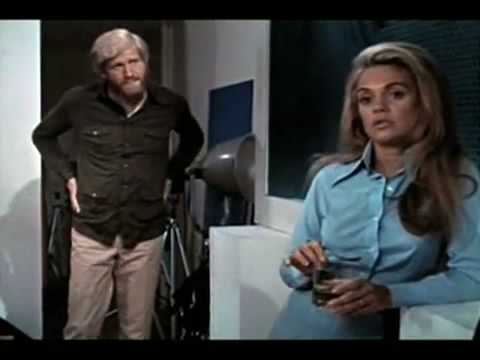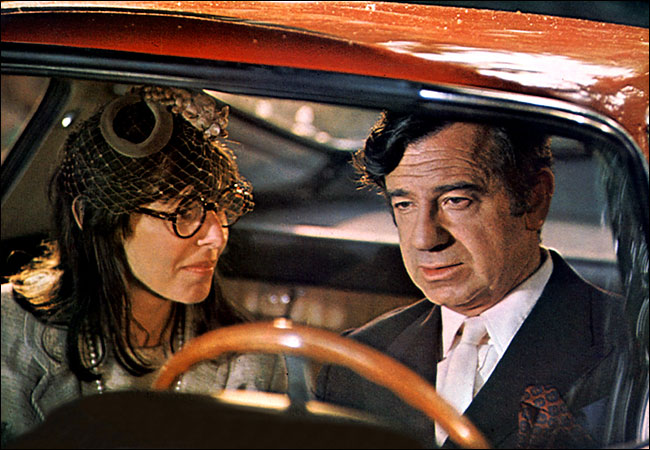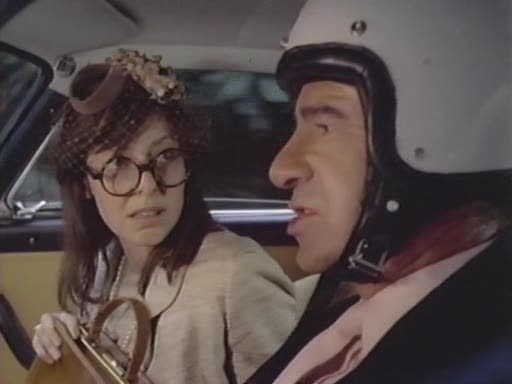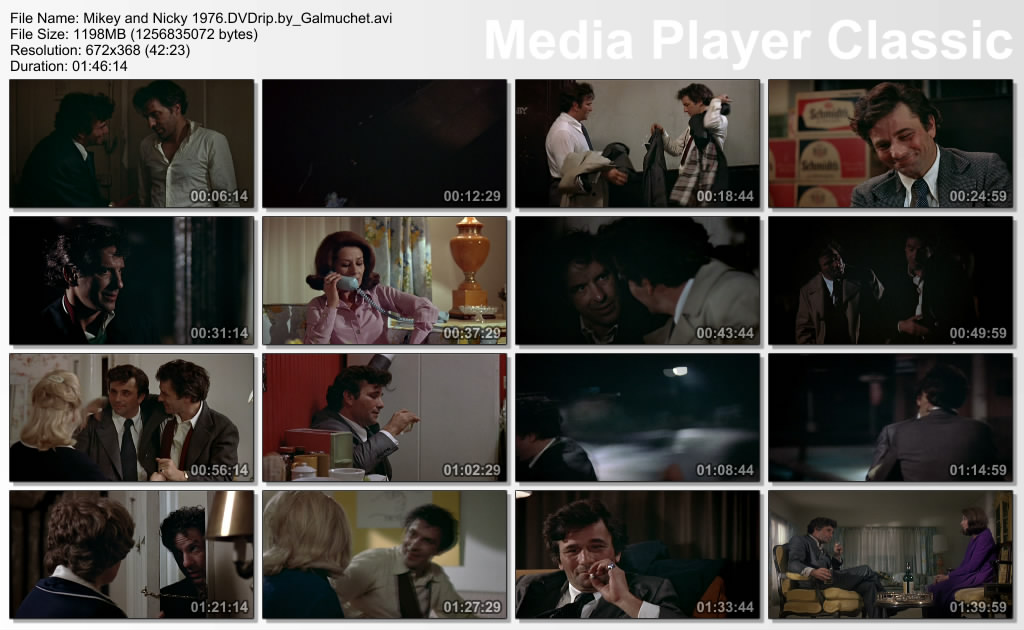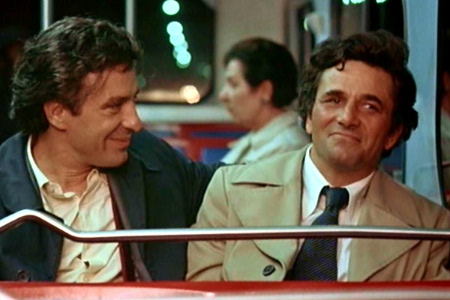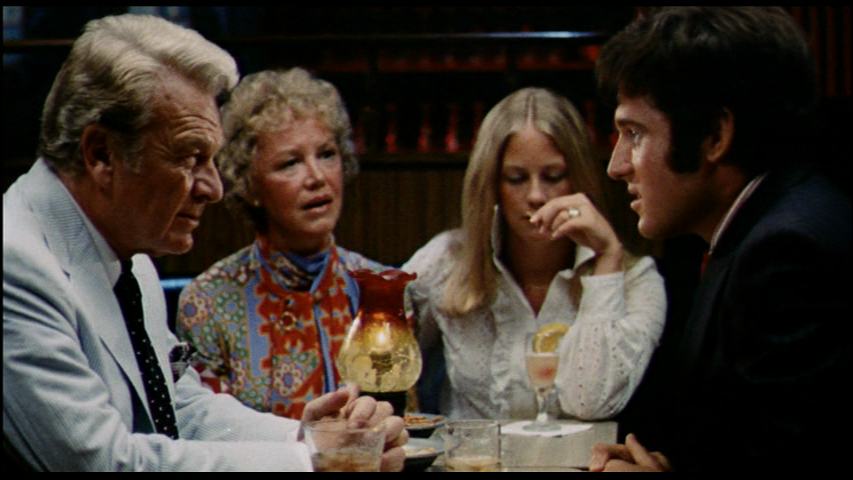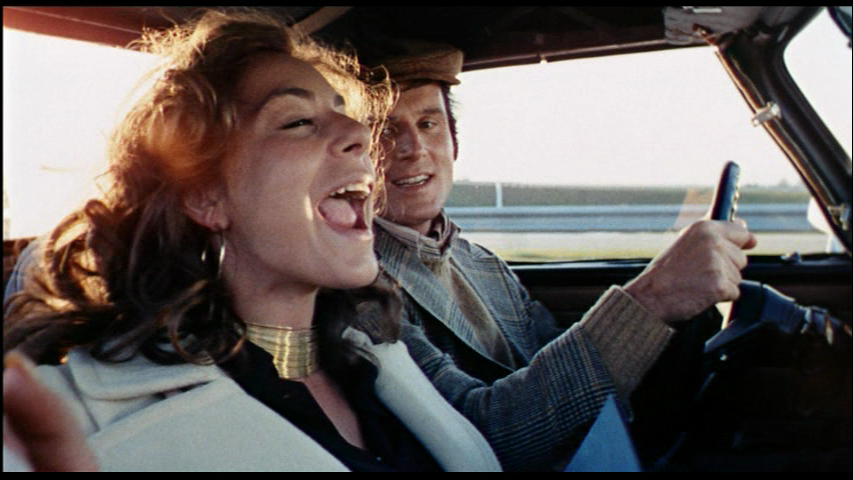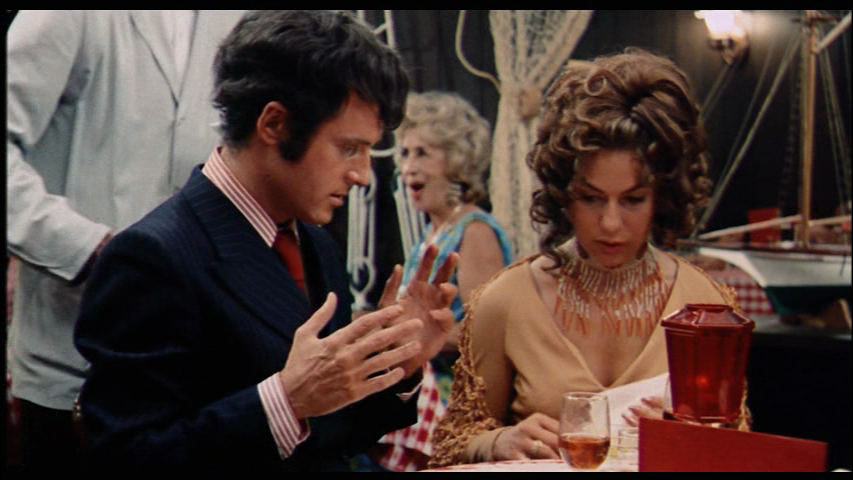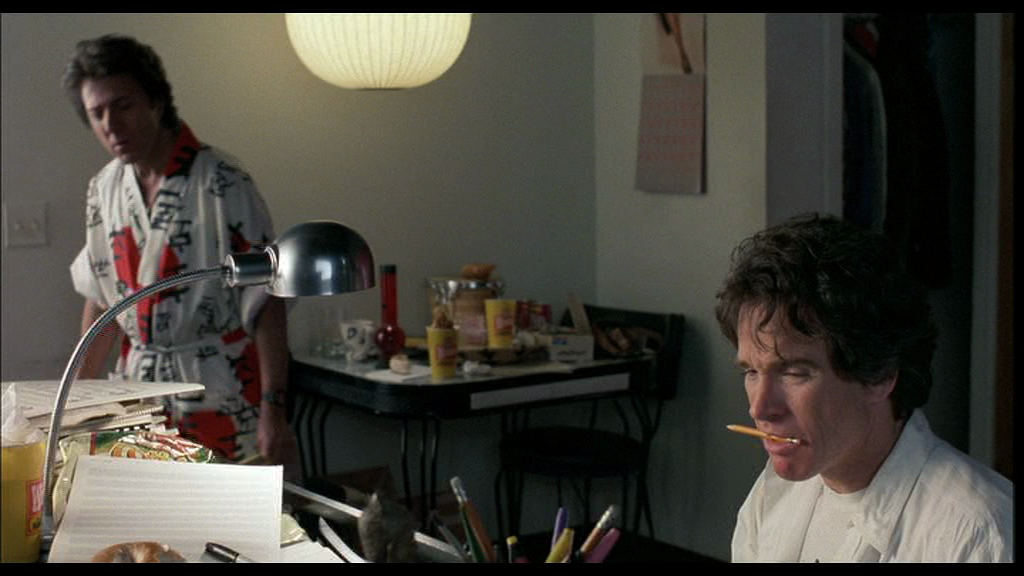This was written for the Writers Guild magazine Written By; it ran in their August 1997 issue and was later reprinted in my collection Essential Cinema.
My comparison of May with Erich von Stroheim, which may sound frivolous, is actually something I take very seriously. Both filmmakers are mainstream figures with the temperaments of avant-garde artists; Orson Welles’ description of Stroheim’s style as “Jewish baroque” also fits May’s quite well; and perhaps most significantly of all, both of these highly obsessional writer-director-performers create films populated almost exclusively by monsters, yet characters whom their creators clearly love. In this latter respect, May might even be considered more radical than Stroheim because one can’t cite a single villain in her four features — unlike, say, Schani the butcher (Matthew Betz) in Stroheim’s The Wedding March. Furthermore, for me, the two greatest Stroheim films, Foolish Wives and Greed, are echoed in many respects by The Heartbreak Kid and Mikey and Nicky, the two best films of May.
On the evening of June 27, 2010, in Bologna, Italy, I had the rare, unexpected, and delightful privilege of spending a couple of hours with May. It was a friendly conversation over dinner rather than any sort of interview, but she did tell me in passing a few things about her life and work that I’ve added to this piece as footnotes. — J.R.
INTERMISSION. The lights have come up. The performers and audience mingle with each other. Lyle and Chuck hurry over to a table where a balding, middle-aged man (MARTY) is sitting.
CHUCK
So what did you think, Mr. Freed?
MARTY
As an agent?
(he shrugs)
Let me tell you what I told Tony Bennett. Sing songs people already know. That way if they don’t like you they still got something to applaud.
LYLE
But…we’re songwriters.
MARTY
So, the Beach Boys aren’t songwriters? Anthony Newley isn’t a songwriter?…
— Elaine May, Ishtar
It’s a truism that writers are among the most neglected creative participants in moviemaking, especially in relation to actors and directors. Yet there’s a special kind of neglect suffered by writer-director-performers as writers, and in this respect Elaine May belongs to a venerable tradition. By virtue of hiding in plain sight, Charlie Chaplin, Erich von Stroheim, Orson Welles, John Cassavetes — four other mavericks who had shifting and sometimes troubled relationships to the mainstream — generally register in the public mind first as actors, then as directors, and finally as writers only in the most confused and uncertain manner.
For starters, given the powerful images these men project as actors, those images often dictate and sometimes interfere with how they’re perceived as directors. For all his ferocity as an actor, Stroheim may not have always been the stereotypical dictator on his sets that the studio publicity machines made him out to be; given the affection for him often expressed by his cast and crew members, the truth may be more complicated than the legend. My own research into the career of Orson Welles suggests something comparable.
“Writers should have the first and last word in moviemaking, the only better alternative being the writer-director, with stress on the first word.” This sounds like Billy Wilder or Joseph J. Mankiewicz, but it was Welles who said it, and there’s plenty of evidence that he believed it — even if he sometimes took credit away from other writers (more clearly, as it happens, on The Lady From Shanghai than on Citizen Kane). Similarly, the best idea we can hope to have of what Stroheim’s “uncut” Greed was like comes from neither Frank Norris’s McTeague nor MGM’s release version — though both provide us with many clues — but from Stroheim’s published script, which few have bothered to read.
On the other hand, what we mean by “writing” can sometimes mean something quite different when it comes to developing physical comedy. From Kevin Brownlow and David Gill’s TV series Unknown Chaplin, we discover that not all of Chaplin’s “writing” was carried out at a desk; some of it was done as a director-performer working with other actors, revising various bits of business until he got them right. And in the case of Cassavetes, the erroneous assumption that much of his dialogue was improvised by his actors has only served to obfuscate many of the remarkable achievements found in his scripts. In all four cases, the fact that the filmmaker often wrote parts for other actors shouldn’t blind us to the fact that he wrote as an actor first of all.
If we begin by assuming that the actor-director who writes is constructing part of a performance in advance, including the part to be shaped by direction, we’ll probably come closer to perceiving his or her contribution. In the case of Elaine May — a writer and sometime director who started out as an improvisational comic actor — the writerly persona may be less obvious than it is with, say, Woody Allen, and not only because May mainly writes for other actors.
Because Allen has published a good many humor pieces in The New Yorker, we can easily identify his literary personality in his movies, even when he works with collaborators. May, by contrast, has elected so often to work anonymously or pseudonymously as a screenwriter that even when she publishes a rare humor piece — such as a recent interview with Walter Matthau in The New Yorker — we can’t fit it into a comparable context. And her determination to avoid interviews about her work has only increased her elusiveness.
Yet if we consider that all four of her features to date as a credited director, three of them written by her, deal with the same obsessive theme — the secret betrayal of one member of a couple by the other — it becomes easy to conclude that a surprising degree of unity can be found in her movie writing. (Her plays for the stage are perhaps another matter, and won’t be dealt with here.) Although the first two of these couples are newlyweds (in A New Leaf and The Heartbreak Kid) and the second two are heterosexual men and best friends (Mikey and Nicky and Ishtar) — a Jew and a Gentile in both cases — it’s clear that all four movies are wrestling with related issues.
So is Such Good Friends, a black comedy about marital betrayal that May scripted for Otto Preminger around the same time she made her first feature. (She signed her adaptation of the Lois Gould novel “Esther Dale,” apparently only because it was commissioned work.) Furthermore, though this might be coincidental, a certain amount of her script work on other projects — credited in some cases (such as Heaven Can Wait and The Birdcage), uncredited in others (such as Tootsie and Wolf) — deals with elaborate forms of deception and disguise.
For all their transgressiveness, A New Leaf and The Heartbreak Kid are still middle-of-the-road mainstream comedies. By contrast, May’s two buddy movies define the outer limits of mainstream in antithetical ways — Mikey and Nicky through the harshness and hardness of its defiant independence, Ishtar through the sweetness and lightness of its blockbuster tactics, in spite of its dark undertones. The lamentable critical and public rejection of both films — the first mainly ignored, the second extensively reviled — is obviously what accounts for May’s subsequent low profile in movies, apart from two recent scripts for Mike Nichols and her performance in the independently made In the Spirit (1990). The latter, a New Age comedy with a script credited to co-star Jeannie Berlin (May’s daughter) and Laurie Jones and direction credited to Sandra Seacat, is rumored to be at least partially the work of May in both departments. (May parodies her own secrecy about such matters by appearing in darkness in the movie’s teaser trailer for cable to say, “I was in the movie and I’m willing to talk about it, but I don’t want to be identified.”) A minor effort in any case, In the Spirit is certainly eccentric enough to suggest May’s creative input.
Born Elaine Berlin in Philadelphia in 1932 — the daughter of Yiddish stage actor Jack Berlin, with whom she often toured* — she first came into prominence at the University of Chicago in the mid 1950s, where she, Mike Nichols, and Shelley Berman all developed their skills in the same improvisational comedy workshop. (Janet Coleman’s book The Compass offers a fascinating look at this seminal group.) Out of this grew her celebrated partnership with Nichols in a satirical duo that produced a hit Broadway revue of comedy sketches in 1960 and numerous spinoffs before dissolving in the mid-60s. More recently, she has teamed up with Nichols again as a writer on two film adaptations directed by him — The Birdcage last year, and Primary Colors, which is currently in production.
***
Significantly, her first work in movies was as a comic performer, in Luv and Enter Laughing (both 1967). She appeared even more prominently in her own first feature, A New Leaf (1971), as a terminally klutzy and unworldly botanist and heiress, wooed as a last resort by a terminally spoiled and jaded playboy (Walter Matthau) whose own inheritance has just run out, who plans to murder her for her fortune. The movie –adapted from Jack Ritchie’s story “The Green Heart” — ends with a last-minute turnaround in which the husband saves his wife from drowning on a camping trip and decides with a certain resignation that he’s actually growing fond of her. But May’s script showed Matthau’s character committing at least two other murders prior to this showdown, poisoning both a blackmailer and his bride’s crooked lawyer (Jack Weston). These scenes were cut by the studio, and May attempted to sue Paramount to block the release of their re-edited version.**
It was the first of her skirmishes with studio management. The second came when she spent a long time editing her even more audacious (if less comic) third feature, Mikey and Nicky, only to have it taken away from her and released in its still-unfinished form. Given that the film starred Peter Falk and John Cassavetes in the title roles, acting in unbridled naturalistic styles comparable to their performances in Cassavetes’ Husbands, there was every reason to suspect that the dialogue was partially improvised, particularly if one assumed (as many did) that the dialogue in Husbands was improvised as well; and the numerous continuity errors only contributed to the film’s slapdash appearance.
Such was my own confused impression when I first saw the film in late 1976; without warning, May had converted herself from a satiric Hollywood director into an unruly Cassavetes disciple. Yet the harrowing experience of her paranoid, hysterical tale, set over one night in Philadelphia — the betrayal of Nicky by Mikey, his best and oldest friend, who fingers him for the Mob that used to employ them both — stayed with me. When I was subsequently able to read the script — as relentlessly focused in its crosscutting patterns as Stoheim’s script for Greed — I discovered that the improvisational feel of the film was attributable only to the success of May and her actors in conveying her powerful writing. In fact, it wasn’t until 1980, when I programmed Mikey and Nicky for “Buried Treasures” at the Toronto Festival of Festivals, and it arrived in a properly edited form, that I could fully appreciate the awesome dimensions of her corrosive masterpiece.
The same year, critic Stanley Kauffman, who called Mikey and Nicky “the best film that I know by an American woman,” also noted the title’s echo of “Mike Nichols”. This wasn’t the first time that May slyly alluded in a film to her former partner. In many respects, The Heartbreak Kid (1972), her second feature –adapted by Neil Simon from a Bruce Jay Friedman story, with an uncredited polish by May — is a complex response to The Graduate (1967), directed by Nichols. Both movies chart the hero’s ditching of a dark, overpowering woman (Anne Bancroft, Jeannie Berlin) for an inaccessible WASP princess (Katharine Ross, Cybill Shepherd) whom he monomaniacally follows all the way to the university she’s attending.
In contrast to Nichols’ casting of a New York Jewish actor (Dustin Hoffman) as a WASPy Los Angeleno, May’s own lead was Charles Grodin, originally approached by Nichols for Hoffman’s part, and whereas both movies end with Christian weddings, May’s begins with an explicitly Jewish one. Even the uses of pop songs as anthems of their heroes’ aspirations have ethnic implications: In contrast to the euphoric Jewish assimilation (and mainstreaming of folk music) of Simon and Garfunkel in The Graduate — which May is still cracking jokes about in Ishtar — The Heartbreak Kid offers multiple versions of a pop single associated with the Carpenters’ “Close to You,” and each successive version registers as more bitterly ironic. In short, working with a Neil Simon script that she was bound by contract to follow, May still found numerous ways to “write” between the lines, and what emerged was every bit as personal as A New Leaf — perhaps even more so because of all the ethnic inflections.
Both comedies are striking in the way they set up an uneasy audience identification with a self-absorbed hero bent on ditching his unsuspecting newlywed wife, rubbing our noses in everything about her that he finds disgusting and abhorrent while creating a surprising amount of empathy and compassion for her as well. It’s a volatile emotional mixture, and if either movie had been directed by a man, charges of misogyny would have seemed almost obligatory. Furthermore, the fact that May cast herself and her daughter as the victimized spouses only added to the effrontery. (May’s gawky performance in A New Leaf and its calculated power to embarrass recalls the physical comedy of Jerry Lewis, whereas Berlin’s in The Heartbreak Kid was sufficiently touching to win her an Oscar nomination.) Combining a passionate will to power as a writer-director with a ferocious autocritique is perhaps the single thematic preoccupation May shares with both Welles and Lewis, and it marks her as an equally dangerous filmmaker.
When a similar sort of ambivalence gets carried over to men in Mikey and Nicky and Ishtar (1987), the effect is both similar and different. In both cases May shifts audience allegiances back and forth between friends like the volleys in a grudge match of Ping-Pong, to the point where we can no longer be sure who is the victim and who is the victimizer. This isn’t to suggest that there isn’t also a world of difference between these movies: Mikey and Nicky ends with one friend barricading his suburban house against the entreaties of the other, who gets gunned down on his doorstep, while Ishtar ends with happy and friendly reconciliation. But the very fact that May manages to plot some of the same obsessive patterns of competitive behavior, crosscutting narrative development, and conflicted audience identification over both movies, begins to show how single-minded she is.
Ishtar was so widely regarded as a folly attributable to producer and co-star Warren Beatty that May’s own role in the proceedings — apart from her perfectionist bent to shoot many retakes — was largely overlooked. Though a lesser work than the May features preceding it, it has the most bite as a satire with political implications — a trait carried over somewhat in her script for The Birdcage. Indeed, it might have been an unconscious recoil from those implications in Ishtar that provoked part of the public’s scorn. It’s a movie, after all, about the idiocy of America blundering its way through the Third World, and about the conflation of show business with foreign policy that, halfway through Reagan’s second term, couldn’t have been more apposite. The film actually ends with a show-biz agent — Marty Freed (Jack Weston) in the above quote — negotiating a peace settlement in the Middle East with the CIA (Charles Grodin) as part of a global entertainment deal for his two clients.
Yet the fact that May clearly loved her oafish heroes (Beatty and Dustin Hoffman) in spite of everything — both miserably untalented songwriters, as helplessly naïve as the botanist in A New Leaf, the Jewish wife in The Heartbreak Kid, and Nicky in Mikey and Nicky — only made the mixture more unpalatable for most critics, who presumably would have been much happier with the misanthropy of a Stanley Kubrick. As Ishtar‘s theme song, penned and performed by the dunce heroes, aptly puts it, “Telling the truth can be a dangerous business, /Honest and popular don’t go hand in hand, /if you admit that you can play the accordion, /No one will hire you in a rock ‘n’ roll band.” For all its limitations, Ishtar is May’s touching admission that she can play the accordion; let’s hope she’ll get more chances to play it.
— Written By, August 1997
Notes (added July 4, 2010)
*May told me at our June 27 meeting that much of the biographical information that circulates about her is false, mainly due to her own idle inventions to the press over the years. She said that she was actually born in Chicago, and further suggested that the story about her growing up in the Yiddish theater was not strictly accurate.
**May mentioned that her first choice for the male lead was actually Christopher Plummer (whose agent turned the part down before Plummer heard about it), and that she wound up playing the female lead largely because she wanted to avoid the studio’s own casting suggestions (which included Carol Channing). She described the murder of Weston as the funniest thing she ever saw Matthau do (and told me she doesn’t know if the footage of this scene still exists), and added that this scene was cut because the Production Code wouldn’t allow his character to get away with murder.



